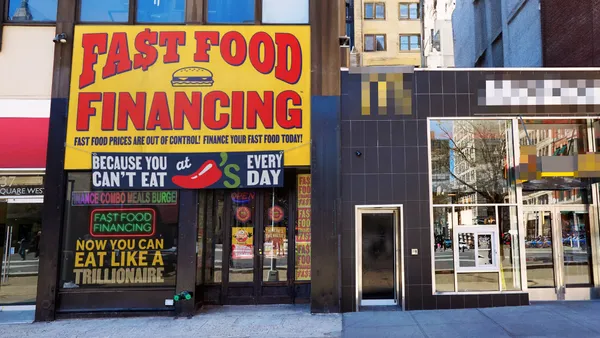Dive Brief:
- One Fair Wage released a report showing 35% of tipped employees experienced wage theft in the past year. Wage theft impacts 2.4 million workers, costing them $8 billion each year, OFW said, citing a 2017 data from the Economic Policy Institute. OFW discussed the findings at a joint webinar Monday with Department of Labor investigators.
- OFW said its report indicated 34% of workers reported an increase in wage theft since 2020. The survey was collected through a combination of telephone calls, emails and in-person interviews with 238 tipped workers.
- OFW argues much of the wage theft experienced by tipped workers occurred when employers failed to make up the difference between the minimum wage and the tips received on top of the subminimum wage, or to pay for overtime.
Dive Insight:
Jessica Looman, acting administrator of the Department of Labor's Wage and Hour Division, said during the webinar, the DOL finds more wage and hours violations in foodservice than in any other industry. According to OFW's data, 46% of restaurant workers reported their employers did not pay time-and-a-half when working overtime. More than a third of surveyed workers said their tips did not bring their wages up to the minimum wage.
Looman emphasized the DOL's role in punishing wage theft, citing an incident in Framingham, Massachusetts, where the Wage and Hour Division recovered $307,000 in back wages for 14 workers at a single pizzeria. Another potential case was brought up during the event when a New York restaurant worker complained he was expected to work 13 hour shifts without breaks.
Saru Jayaraman, president of One Fair Wage, said 2021 has seen "a real uptick in violations," assertions backed by the nonprofit's survey where 34% of respondents said they experienced more violations of their rights in 2021 than 2020.
OFW argues these issues, among many other labor concerns, are driving restaurant workers to leave the industry, which is already struggling with retention. At least 54% of workers in restaurants have considered leaving their jobs, OFW said, with more than three-quarters saying they would stay for a higher wage.
The industry, by some measures, employs a million fewer workers than before the pandemic. According to the Bureau of Labor Statistics, upwards of 40,000 workers left the foodservice industry in August, the first net job loss for restaurants in 2021.
Secretary of Labor Marty Walsh said during the webinar the pandemic’s economic shock hit restaurant workers especially hard.
"They’re disproportionately women and workers of color," Walsh said. "The economic downturn, combined with conditions in the service industry, made these workers even more vulnerable than they already were."
Corey Walton, a community outreach and resource planning specialist with the Wage and Hour Division of the DOL, said it was an employer’s responsibility to bring the subminimum wage up to local minimum wage levels using tips.
The subminimum wage, however, has attracted criticism from OFW in the past, which has argued a higher minimum wage would aid employee retention and cut down on sexual harassment. Supporters say raising it would impose unsustainable costs on restaurants, without keeping workers out of poverty.
Recently, opponents of the subminimum wage have advanced a proposal to eliminate it in Washington, D.C. A similar proposal passed by referendum in 2018, but was overturned by the city council. It is unclear whether the new proposal will make it onto ballots.













